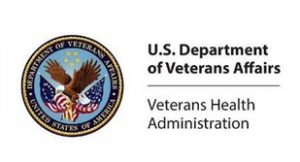 The Northwest Pennsylvania (NW PA) Veteran Suicide Prevention Program operates on a three-pronged approach involving healthcare providers, community organizations, and Veterans and their families in the 15 counties of NW PA. Because of this focus, we want to share information shared by VA regarding the National Veteran Suicide Prevention Report. We encourage everyone to review this information, share it within personal and professional networks, and get involved in stigma-reduction and suicide prevention efforts in their communities.
The Northwest Pennsylvania (NW PA) Veteran Suicide Prevention Program operates on a three-pronged approach involving healthcare providers, community organizations, and Veterans and their families in the 15 counties of NW PA. Because of this focus, we want to share information shared by VA regarding the National Veteran Suicide Prevention Report. We encourage everyone to review this information, share it within personal and professional networks, and get involved in stigma-reduction and suicide prevention efforts in their communities.
Read time: 7 minutes
Insights from the National Veteran Suicide Prevention Report
By Matt Miller
National Director of VA Suicide Prevention Program
 This week, VA released its National Veteran Suicide Prevention Annual Report, providing a comprehensive analysis of Veteran suicides through the year 2021. The report shows that 6,392 Veterans lost their lives to suicide in 2021—an increase of 114 over 2020—emphasizing the urgent need for continued efforts in suicide prevention. Simultaneously, non-Veteran suicides also increased, reaching 40,020 deaths, an increase of 2,000 from 2020. These figures underscore the magnitude of the challenge and the pressing need for effective prevention, intervention and postvention strategies.
This week, VA released its National Veteran Suicide Prevention Annual Report, providing a comprehensive analysis of Veteran suicides through the year 2021. The report shows that 6,392 Veterans lost their lives to suicide in 2021—an increase of 114 over 2020—emphasizing the urgent need for continued efforts in suicide prevention. Simultaneously, non-Veteran suicides also increased, reaching 40,020 deaths, an increase of 2,000 from 2020. These figures underscore the magnitude of the challenge and the pressing need for effective prevention, intervention and postvention strategies.
The year covered by this report, 2021, was the first full year of the COVID-19 pandemic, which led to greater financial strain, housing instability, anxiety and depression levels, and barriers to health care—all of which are associated with increased risk of suicide for Veterans and non-Veterans alike. There was also an increase in firearm availability in 2021, which is proven to increase both the risk of suicide and the risk of dying during a suicide attempt.
Amid the challenges of 2021, there were some anchors of hope. The number of annual Veteran suicides has decreased from 6,718 in 2018, and suicide rates fell for Veteran men aged 75 and older. However, this report makes clear that there is still much work to be done.
Ending Veteran suicide is VA’s top clinical priority and a top priority of the Biden-Harris administration, and we’re continuing to work urgently to end Veteran suicide through a public health approach that combines both community-based and clinically based strategies to save lives.
Here are some of the critical steps that VA has taken since 2021 to prevent Veteran suicides and save lives:
Offering no-cost suicide prevention care
Since Jan. 17, 2023, Veterans in acute suicidal crisis have been able to go to any VA or non-VA health care facility for emergency health care at no cost—including inpatient or crisis residential care for up to 30 days and outpatient care for up to 90 days. Thus far, this expansion of care has helped prevent Veteran suicide by providing no cost care to more than 33,000 Veterans in times of crisis.
Launching the shortened Veterans Crisis Line number
 Since the launch of “Dial 988 then Press 1” as the shortened Veterans Crisis Line number in July 2022, the crisis line has fielded more than 1.3 million contacts. This includes over 1,098,000 calls, an increase of 12.9% from the same timeframe from the previous year, with an average speed to answer of 9.5 seconds. There was also a year-over-year increase in text messages (40.6%) and online chats received (10.5%). This increase in contacts is evidence that the hotline is working—Veterans in crisis are getting the help they need at the moment they need it.
Since the launch of “Dial 988 then Press 1” as the shortened Veterans Crisis Line number in July 2022, the crisis line has fielded more than 1.3 million contacts. This includes over 1,098,000 calls, an increase of 12.9% from the same timeframe from the previous year, with an average speed to answer of 9.5 seconds. There was also a year-over-year increase in text messages (40.6%) and online chats received (10.5%). This increase in contacts is evidence that the hotline is working—Veterans in crisis are getting the help they need at the moment they need it.
Recent studies also show that Veteran callers to the crisis line were over five times more likely to have less distress at the end of a call than at the beginning, almost five times more likely to have less suicidal ideation at the end of the call than at the beginning, and 11 times more likely to have less suicidal urgency at end of call than beginning. Also, among Veterans who had suicidal thoughts who called VCL, 82.6% reported that using the VCL played a role in stopping them from acting on those thoughts.
Investing in prevention
Recognizing the severity of the issue, VA has allocated $105 million in Veteran suicide prevention grants since 2021 through the Staff Sergeant Parker Gordon Fox Suicide Prevention Grant Program. These funds support various initiatives through 80 community-based organizations that provide or coordinate the provision of suicide prevention services for eligible Veterans and their families.
Public awareness and resource campaigns
 VA has launched a multifaceted approach to reach Veterans at risk, including public service announcements (PSAs) that have reached over 7.9 million Veterans and driven more than 3.5 million visitors to our support website, VA.gov/Reach. These campaigns serve as a crucial tool in raising awareness about the resources available and encouraging Veterans to seek help when needed.
VA has launched a multifaceted approach to reach Veterans at risk, including public service announcements (PSAs) that have reached over 7.9 million Veterans and driven more than 3.5 million visitors to our support website, VA.gov/Reach. These campaigns serve as a crucial tool in raising awareness about the resources available and encouraging Veterans to seek help when needed.
Governor’s Challenge and community engagement
The “Governor’s Challenge to Prevent Suicide among Service Members, Veterans and their Families” now includes all 50 states and five territories, which is a testament to the collaborative work being done to prevent Veteran suicides. In a coordinated effort to implement the National Strategy for Preventing Veteran Suicide, each state and territory has developed a strategic action plan focused on suicide prevention. VA has also partnered with more than 1,700 community-based coalitions to engage Veterans in crisis at the grassroots level, leveraging local resources and support networks to address the diverse needs of Veterans.
Firearm safety and lethal means prevention
 The report highlights a troubling statistic: 72% of Veteran suicides involved firearms in 2021. Recognizing the correlation between firearm accessibility and suicide rates, VA has initiated efforts to promote secure storage of firearms—including distributing more than 400,000 gun locks; providing lethal means safety training to 2,300 community health care providers; and conducting lethal means safety outreach to Veterans, garnering more than 137 million views and 6.8 million website visits.
The report highlights a troubling statistic: 72% of Veteran suicides involved firearms in 2021. Recognizing the correlation between firearm accessibility and suicide rates, VA has initiated efforts to promote secure storage of firearms—including distributing more than 400,000 gun locks; providing lethal means safety training to 2,300 community health care providers; and conducting lethal means safety outreach to Veterans, garnering more than 137 million views and 6.8 million website visits.
We have more to do
Suicide is a complex public health issue, and there is no single cause and no single solution. To end Veteran suicide, we need to understand all facets of the problem, and that is what this annual report is all about. It serves as a comprehensive overview of the current state of Veteran suicides, the initiatives in place to address the crisis, the progress made in certain demographics and the work still to be done. As we continue to confront this critical issue, the findings from this report will provide valuable insights that can guide future strategies and interventions to save lives and support those who have sacrificed so much for our country.
As Secretary McDonough has said, “There is nothing more important to VA than preventing Veteran suicide—nothing. One Veteran suicide will always be one too many, and we at VA will use every tool at our disposal to prevent these tragedies and save Veterans’ lives.”
Looking to Get Involved?
Whether you identify as a healthcare provider, community organization, or Veteran, there are several opportunities through the NW PA Veteran Suicide Prevention Program and PERU to connect to resources, participate in educational training, and promote harm reduction strategies. We are actively recruiting healthcare and community partners to work with us in meeting our goals and objectives. To learn more, visit the program website at theresilientveteran.org.
Need Help? Know Someone Who Does? Contact the National Suicide Prevention Lifeline at 988 or use the online Lifeline Crisis Chat. Both are free and confidential. You’ll be connected to a skilled, trained counselor in your area.

